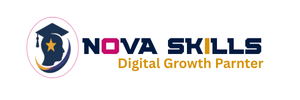Boost WordPress Security: Complete Beginner’s Guide 2025
If you’re looking for ways to improve your WordPress security, you’re in good company. WordPress is the content management system for 43% of all large and small websites, so it is a prime target for hackers. Whether you run a personal blog, an online store, or a business website, protecting your WordPress site is essential to keeping your content, its users, and your brand safe and sound. In this guide, you will master methods that don’t require any more expertise than you possess by virtue of reading this far.
Why WordPress Security Matters
Not securing your website can lead to grave outcomes. And WordPress security is a must, no ifs, ands, or buts about it. Here’s why:
• It helps you head off hacking attempts and data breaches.
• It keeps you from suffering potential penalties or getting deindexed by Google.
• It safeguards against the compromise of sensitive customer data.
• It allows you to maintain user trust and brand credibility.
• It helps ensure that your site’s performance and uptime are optimal. Cyber threats are becoming increasingly sophisticated, and so must our site security.
1. Choose a Secure Hosting Provider
The security of your site is fundamentally dependent on your hosting provider. Always select a well-regarded company that can provide:
• Complimentary SSL certificates
• Consistent malware and server-side inspections
• Protection against DDoS attacks
• Daily, automatic backups of your site
Some suggested hosts are: SiteGround , Kinsta , Bluehost.
2. Keep WordPress Core, Plugins & Themes Updated
One of the biggest vulnerabilities are themes and plugins that are outdated. Always:
• Enable automatic updates for the WordPress core
• Remove plugins that are unsupported or not in use
• Update regularly all premium plugins and themes.
3. Install a WordPress Security Plugin
A security plugin can simplify your protection strategy. The best available are:
• Wordfence Security
• Sucuri Security
• iThemes Security
These plugins have core capabilities that are crucial:
• WAF web application firewall
• Real-time malware scanning
• Login protection
• File change detection
4. Use Strong Usernames & Passwords
Brute-force attacks often lay siege to fragile login passwords. Fortify your login by:
• Not using names like “admin” for starters
• Using strong, individual passwords that are impossible to guess
• Not relying on only one password for everything, especially not for encrypted files
• Limiting the number of attempts a would-be attacker can make
5. Enable HTTPS with an SSL Certificate
HTTPS is recommended for all websites by Google. Most trustworthy hosting services provide free SSL certificates through Let’s Encrypt. The benefits of using HTTPS are:
• All data that’s sent between the user and server is encrypted
• Trust and credibility are increased
• SEO ranking improves
6. Backup Your Website Regularly
In case of security breach or data loss, backups are your lifeline. Use plugins such as:
• UpdraftPlus
• BlogVault
• Jetpack Store backups offsite
(e.g., Dropbox, Google Drive), and automate daily or weekly backups.
7. Change Default Login URL
Hackers target the common login URL (/wp-admin). You can make it a less convenient target by using plugins such as WPS Hide Login to:
• Change the URL for the login page
• Cut down on bot login attempts
• Add a slight uptick in security for the login process
8. Disable File Editing in WordPress Dashboard
If they penetrate to your admin panel, these baddies can plant wicked code into your theme or plugin files. Protect against this by disabling file editing. To do so, add the most excellent command to your wp-config.php file:
1) PHP
2) CopyEdit
3) define(‘Disallow-file-edit’ true)
9. Manage User Roles and Permissions Carefully
Observe the principle of least privilege. Assign only the needed levels of access:
• Administrator: Full access
• Editor: Access to manage content
• Author/Contributor: Limited access to some content Regular audits of accounts should be done to clean out any accounts that are no longer useful or relevant.
10. Use Web Application Firewall
A WAF serves as a protective barrier, preventing harmful traffic from making its way to your website. The leading WAFs are:
• Cloudflare
• Sucuri
• Astra Security
These top-notch services obviate the need for worry about:
• SQL injections
• Cross-site scripting (XSS)
• Zero-day vulnerabilities
Conclusion
In 2025, it is essential for any website owner to know how to protect a WordPress site. This is because the WordPress health and security plugin company Sucuri reports that the site-building platform is becoming more targeted by hackers and cybercriminals. Similarly, a 2022 report from cybersecurity company SureCloud indicates that WordPress had the most vulnerable websites in that year. A website owner can implement these protective measures to harden their site against invaders both now and in the future.






